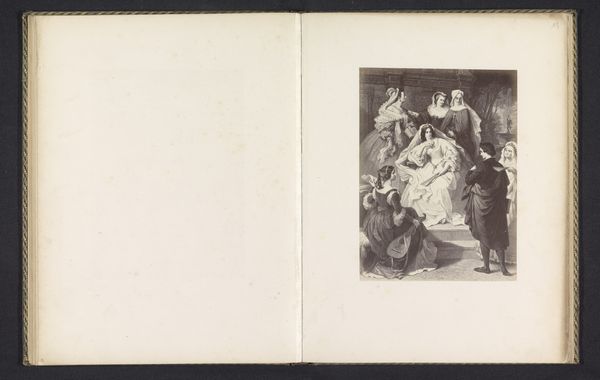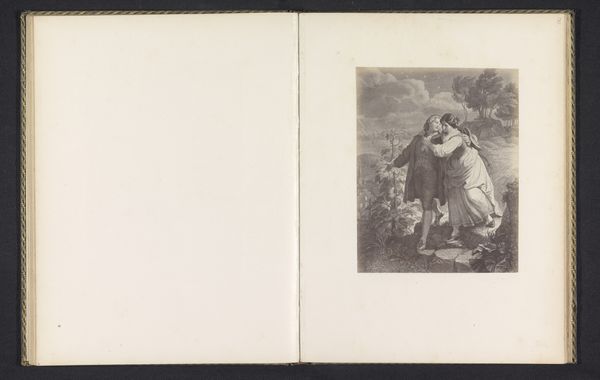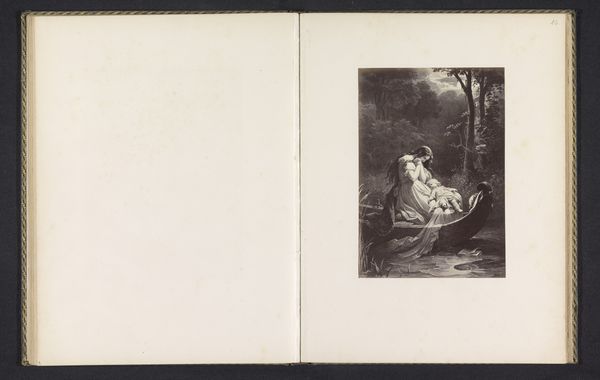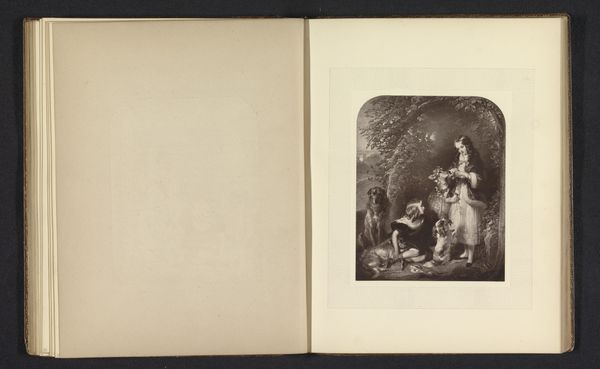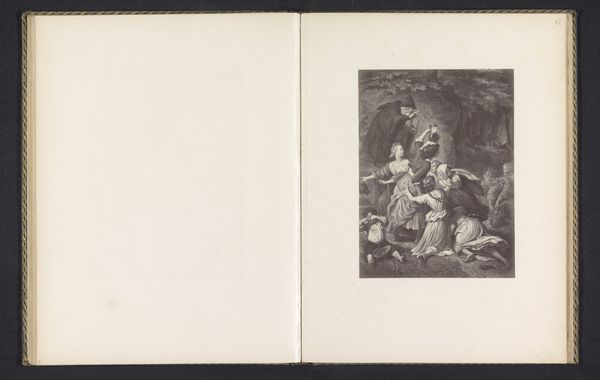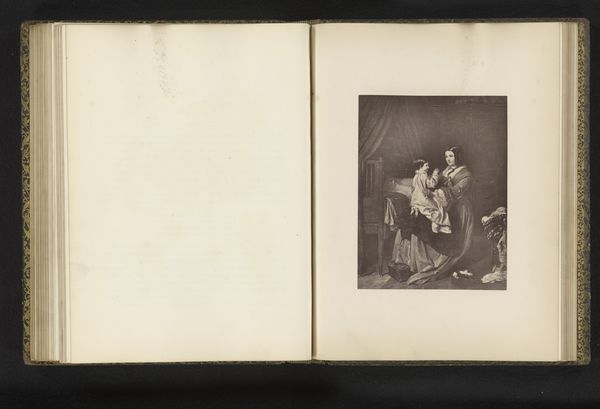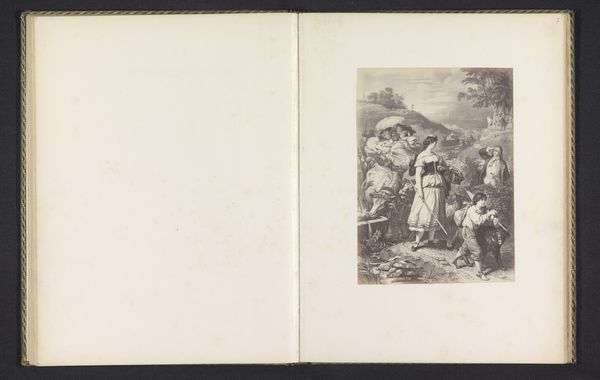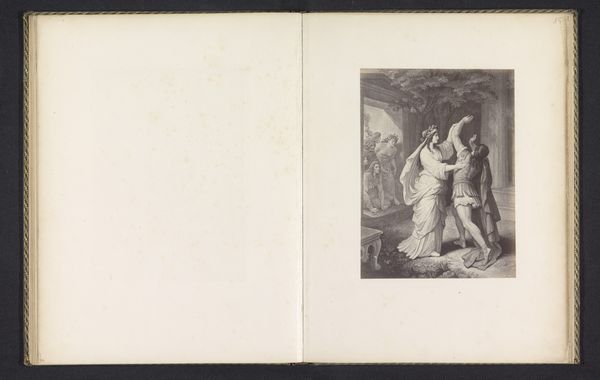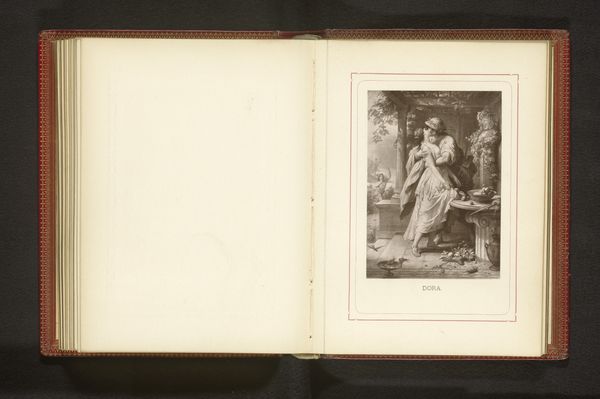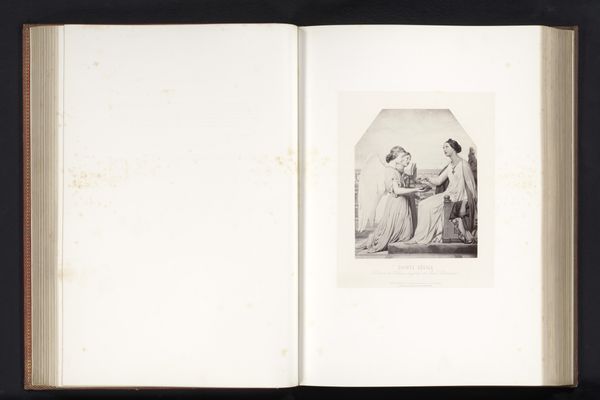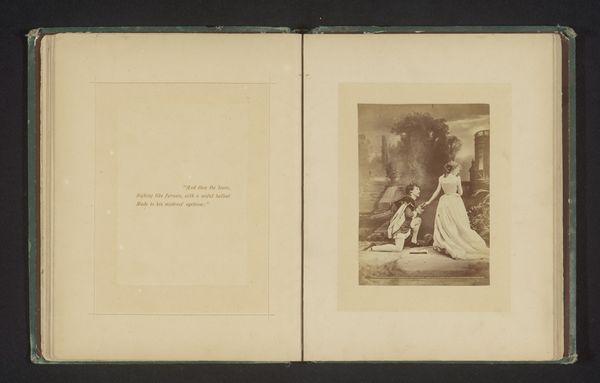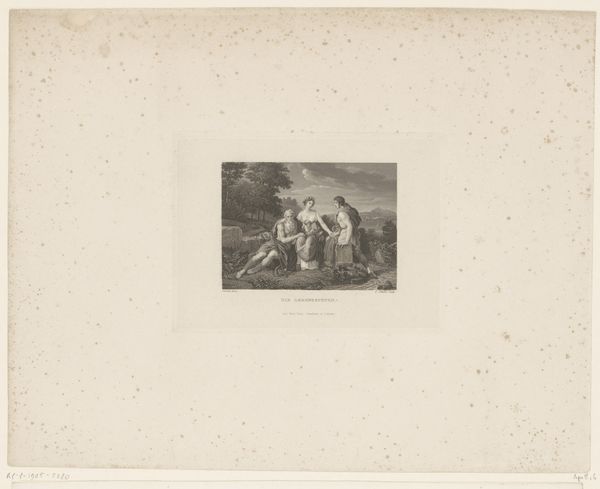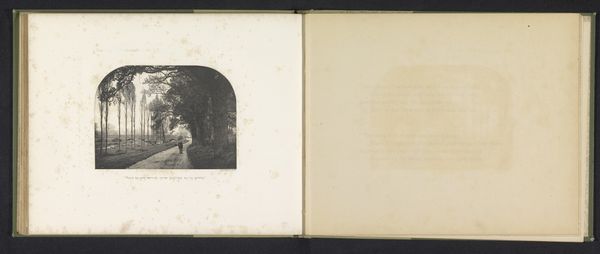
Fotoreproductie van een prent, voorstellende Alexis kust Dora c. 1875 - 1885
0:00
0:00
#
aged paper
#
toned paper
#
homemade paper
#
ink paper printed
#
personal sketchbook
#
coloured pencil
#
ink colored
#
watercolour illustration
#
watercolor
#
historical font
Dimensions: height 184 mm, width 130 mm
Copyright: Rijks Museum: Open Domain
Curator: What a find! This photogravure, dating from around 1875 to 1885, presents a scene titled "Fotoreproductie van een prent, voorstellende Alexis kust Dora"—"Photographic reproduction of a print, depicting Alexis kisses Dora." It resides in the Rijksmuseum’s collection, offering us a glimpse into how art was disseminated through reproductive technologies of the time. Editor: It has a sentimental, almost theatrical air. The embracing couple evokes a storybook scene. Look at the draped fabrics and the abundance of natural imagery – flowers and vines – a heady atmosphere indeed. The figures' positioning gives an overall sense of romance and almost melodrama. Curator: The photographic reproduction hints at a broader trend. During the latter half of the 19th century, reproductive prints made artworks more accessible, playing a key role in shaping visual culture and influencing popular taste. They democratized access. What this implies is that people outside the upper classes were seeing a lot of things for the first time in history through reproductive means. Editor: Notice how the kiss is central, with Alexis’ arms draped over Dora, almost enfolding her. Kisses often symbolized allegiance or social contracts. Yet, there is a certain innocence suggested too by the surrounding imagery—Cupid, floral displays, soft fabrics. Almost like an idealized view of relationships and, perhaps, feminine virtue. Curator: That emphasis on sentimental and allegorical representations can tell us a lot about societal values at the time, especially about expectations and social attitudes. The "cult of domesticity" often dictated social roles and gender behavior, something to bear in mind when interpreting scenes like these. Editor: Certainly. I'm also struck by the light and shadow contrasts; how they add dimension to what would be otherwise, quite flat, reproduction. The symbolic intent becomes somewhat diluted through the layers of translation – a painting copied by a print, captured through photography. Perhaps its initial symbolism undergoes reinterpretation with each replication. Curator: Precisely! That shift in interpretation highlights how visual communication mutates, which ultimately enriches our understanding of socio-cultural evolution. Each adaptation layers and nuances of cultural significance over the image. Editor: It leaves me thinking about what was actually gained versus what was lost between those artistic "translations". The layered symbols evolve to reflect different ideals, beliefs, and emotional investments from viewers throughout time. Curator: An excellent point! And this opens many possibilities to see visual storytelling not as fixed statements but ever-changing discussions influenced by societal shifts. Editor: Indeed, tracing back the imagery we are immersed in everyday and examining their changing connotations might give us important clues to understand who we are today.
Comments
No comments
Be the first to comment and join the conversation on the ultimate creative platform.
